Photo by amin ramezani on Unsplash (license)
If you want to improve the quality of your food photography, you’ve stumbled upon the right place! In this guide to food photography composition techniques, we’ll share five simple tips that will instantly enhance your images’ visual appeal and overall quality.
We’ll touch on techniques such as styling and arrangement, negative space, point of view, and more. Additionally, we’ll share a must-own piece of photography gear for food photography. Finally, as a bonus, we’ve included a short list of more essential food photography tips at the end of the article.
While most of the techniques discussed below are tailored toward beginner and intermediate photographers, everything also applies to professional photographers. So, there is plenty to take away, regardless of your photography experience or skill level. With that in mind, let’s get to it!
Check out the video above by Lauren Short to learn how to use compositional techniques to improve your food photography.
Table of Contents
- Food Photography Composition: Styling and Arrangement
- Techniques for Food Photography Composition
- Negative Space as a Compositional Tool
- Point of View Impacts the Composition
- Dynamic Techniques for Food Photography Composition
- Final Thoughts on Food Photography
Food Photography Composition: Styling and Arrangement

Photo by Aurela Redenica on Unsplash (license)
The easiest way to ensure good food photography composition is to arrange the food attractively before taking pictures. Exploring different organizational techniques for arranging food will lead to more visually appealing images. Factors to consider when creating the scene include colors, texture, and shape.
Two more styling tips are incorporating background elements and choosing appropriate props. Background elements can make or break a photo, so you always want to use elements that complement your main subject. Similarly, appropriate (and properly placed) props will enhance the mood and storytelling of your photos instead of creating unwanted distractions.
Techniques for Food Photography Composition
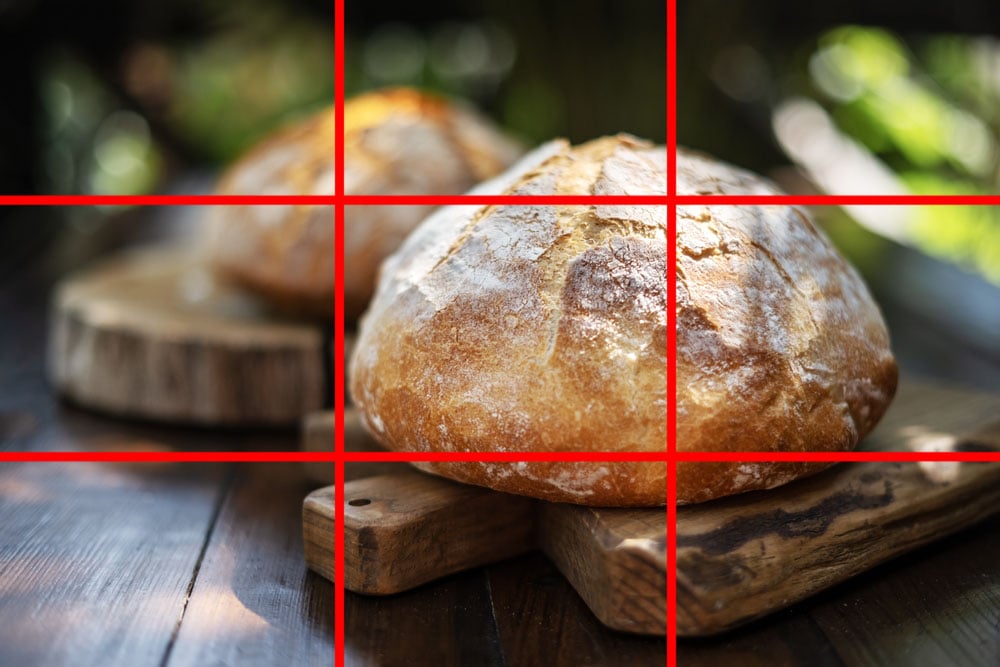
Photo by Smit via Shutterstock
The simplest food photography composition technique is the rule of thirds. What is the rule of thirds? As you can see above, it’s an imaginary grid that divides your frame into thirds, both horizontally and vertically. Where these lines intersect, you should try to position your food because it will generate more interest and create more balanced images.
You can also use food photography composition techniques like leading lines, symmetry, and asymmetry. Leading lines help direct the viewer’s eyes through the photos and draw attention to the food. At the same time, symmetry adds visual harmony, while asymmetry creates a sense of tension. Depending on your desired look and feel, one will work better.
Negative Space as a Compositional Tool
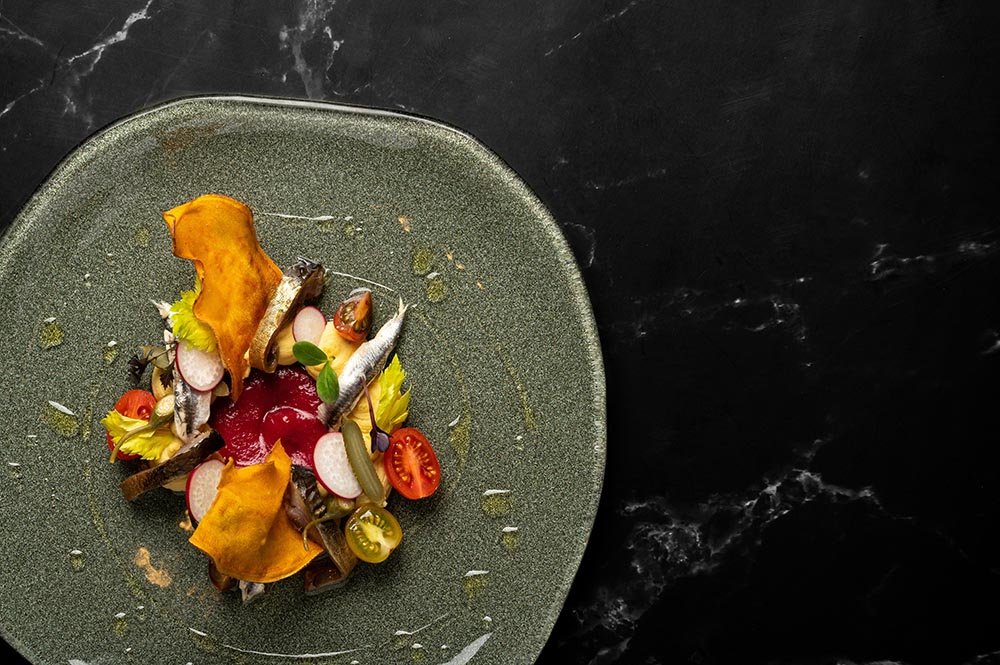
Photo by Marios Gkortsilas on Unsplash (license)
Like in portrait and product photography, using negative space as a food photography composition tool can yield spectacular results. It naturally and effectively isolates your subject within the frame, giving the food “breathing room” that highlights it. Moreover, negative space adds a sense of depth, especially when you use shallow depth-of-field effects.
Don’t go wild with negative space, though. You should always look for a good balance between your subject and the negative space. Otherwise, the food you are trying to photograph could get lost in the background, and your food photography composition will be less visually pleasing.
Point of View Impacts the Composition
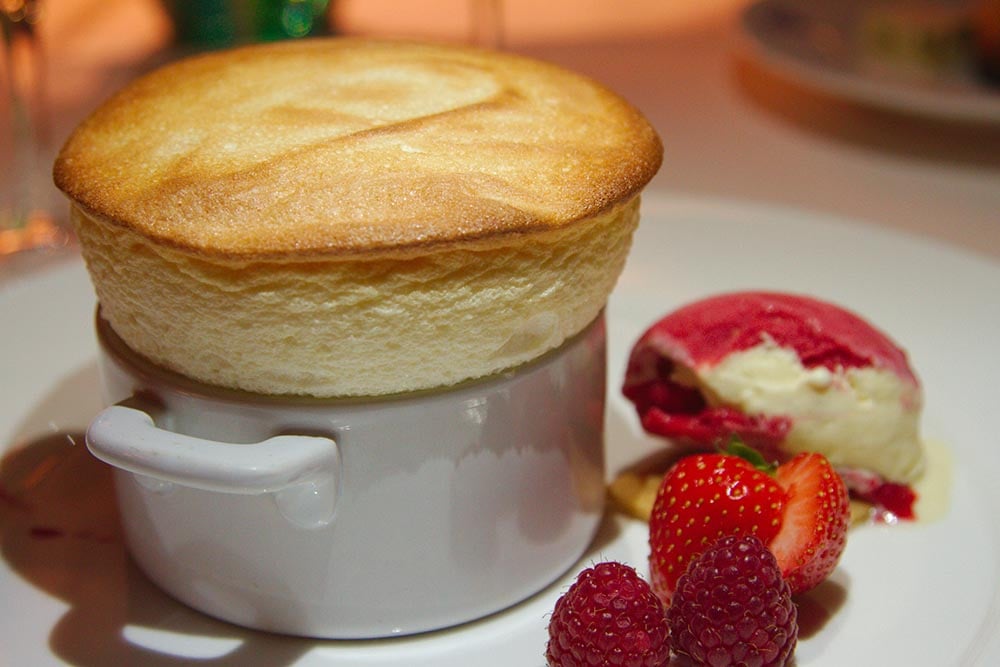
Photo by Kamala Bright on Unsplash (license)
Point of view and angle also play a big role in food photography composition. Different perspectives can drastically change the mood and storytelling of your image. Therefore, you should play with different angles throughout your photo shoot until you find the perfect one. Popular perspectives to try are low-angles, close-ups, eye-level, and overhead shots.
Using low-angles for food photography creates unique photos different from what you usually see online in food ads and on Instagram. As shown above, using a low angle emphasizes the profile of the dessert while also allowing the photographer to highlight the color and texture of the strawberries in the foreground.
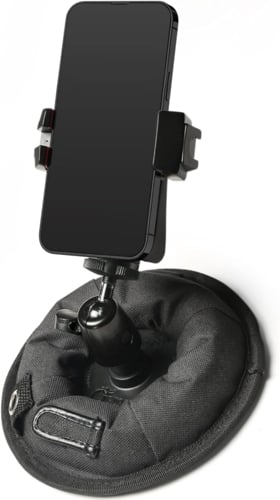
Our favorite piece of camera gear for low-angle food photography is the Octopad. It’s a one-of-a-kind stabilizing device that provides unmatched stability and portability…
Thanks to its compact size, the Octopad is super portable whether you are walking around the photo studio or traveling around the world. Additionally, its small footprint makes it easy to work with, even when shooting on small tables with limited space.
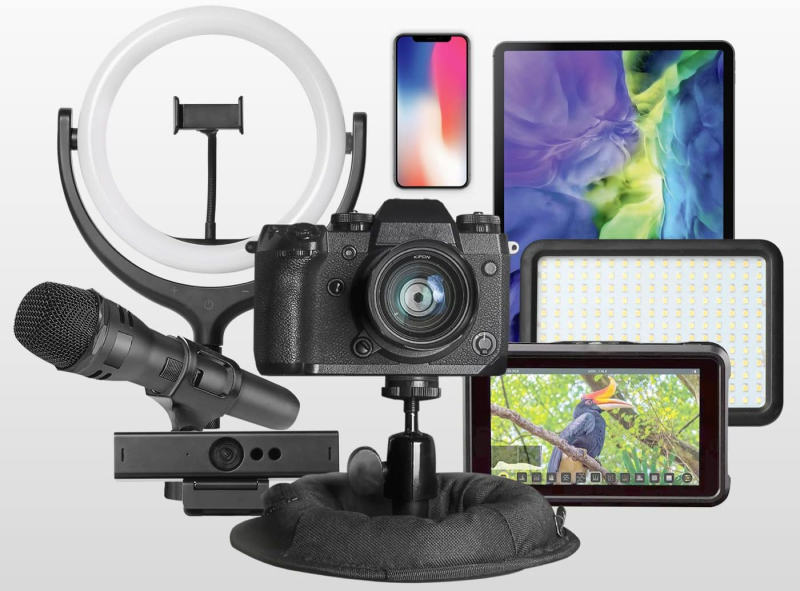
And if that wasn’t enough, the Octopad is one of the most versatile pieces of photography gear on the market. It’s compatible with DSLRs, mirrorless cameras, action cameras, smartphones, microphones, monitors, lights, and more!
That means you can throw this little gadget in your camera bag and use it for all sorts of photoshoots, food photography and otherwise. And since it’s a small, lightweight stabilizing device, it won’t take up much space in your bag, unlike a traditional tripod. What’s not to like?!
Dynamic Techniques for Food Photography Composition
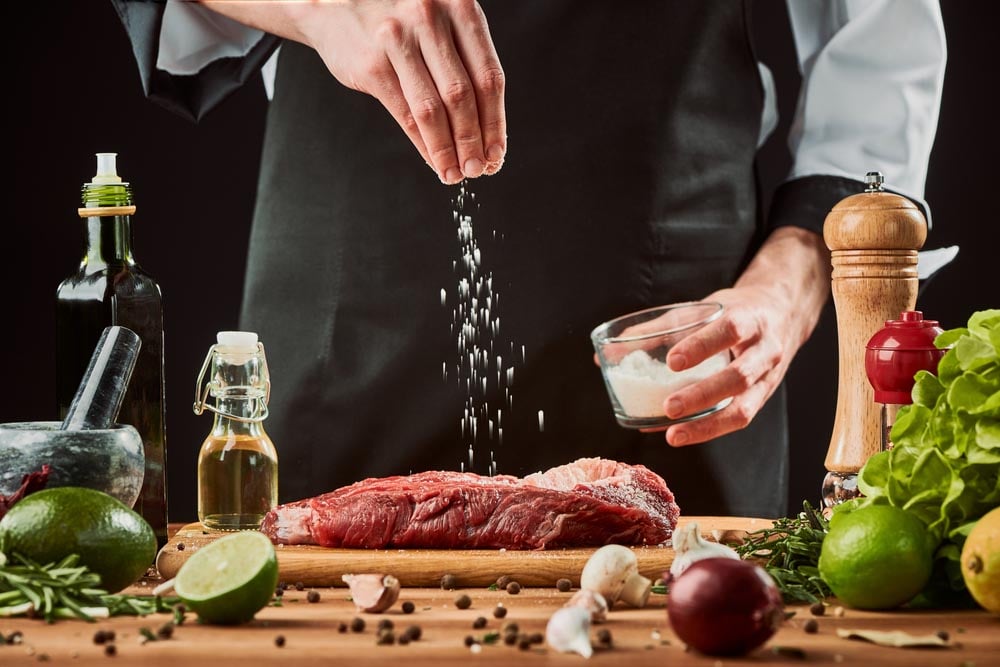
Photo by Yuriy Golub via Shutterstock
Last but not least, we recommend spicing up your food photography by incorporating dynamic composition techniques. For example, you can use elements of movement (sprinkling salt, pouring sauce, dancing flames, etc.) to add dynamism and narrative to your pictures.
Other dynamic food photography composition techniques include layering, stacking, framing, and cropping. Layering and stacking typically add depth and more visual interest. Framing and cropping, on the other hand, can focus attention on specific details of a food photography scene.
Final Thoughts on Food Photography
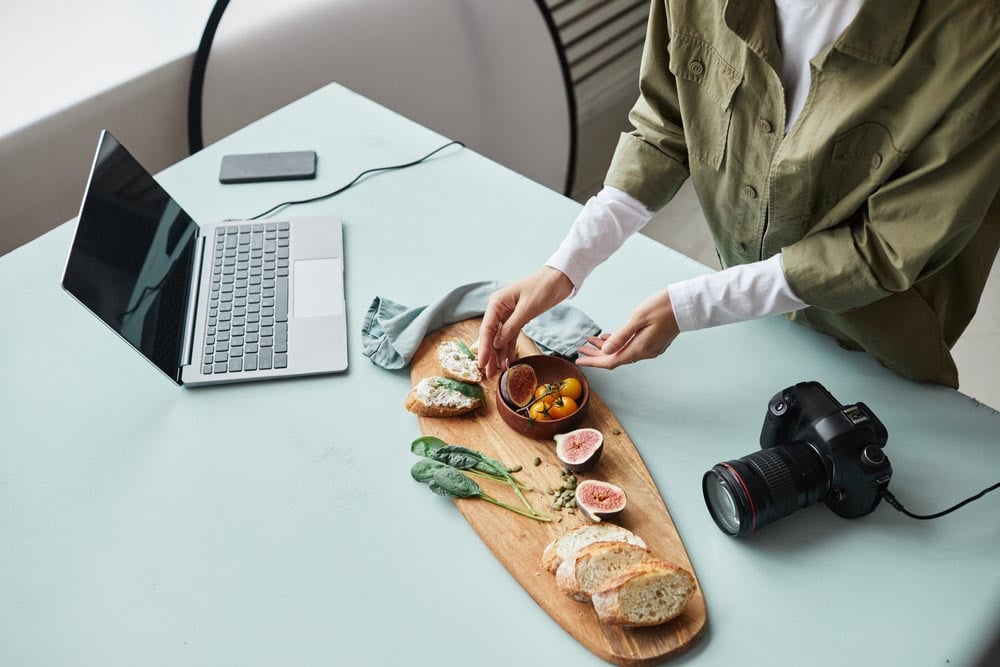
Photo by SeventyFour via Shutterstock
Although food photography composition is important, it’s not the only thing to keep in mind when photographing food. With that said, here are some more food photography tips to help you achieve better results.
- Invest in the right camera equipment for food photography (camera, lenses, tripod, etc.).
- Lighting plays a HUGE role. Don’t be afraid to experiment with natural and artificial light.
- Use shallow depth of field (bokeh) effects to isolate the food from the background.
- Edit your photos in post-production to enhance the vibrancy of colors (but don’t overdo it).
- Get creative, try different things, and practice!
A quick heads-up: If you snag something through our affiliate links or check out our sponsored content, we might earn a commission at no extra cost to you. But fear not, we’re all about recommending stuff we’re truly stoked about!

